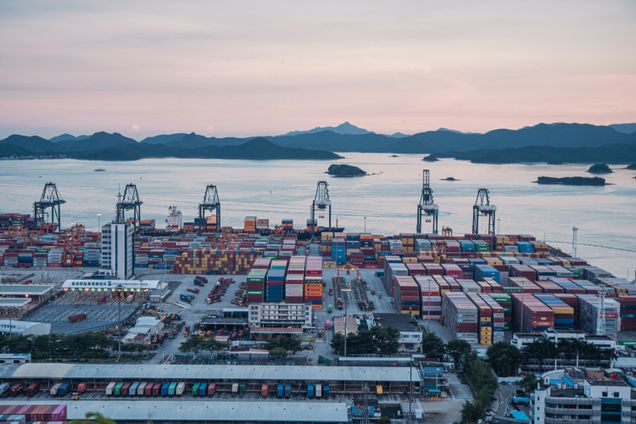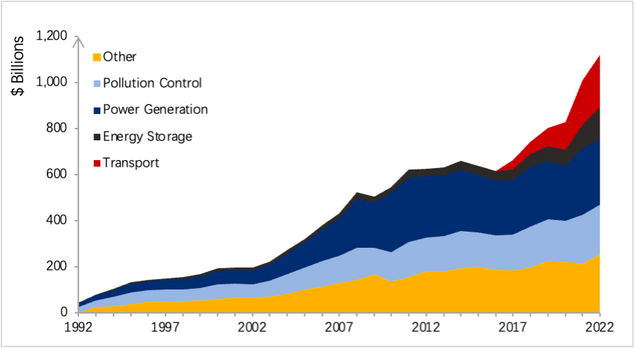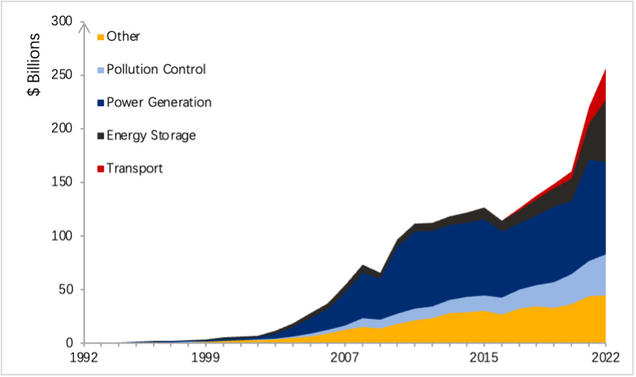Trading Partners and Market Shapers: The Role of China in the Global Trade of Low-carbon Technologies

By Jiaqi Lu
As the world faces the urgent challenges of climate change, global trade for low-carbon technologies (LCTs) is becoming increasingly critical to meeting the surging demand for clean energy.
Low-carbon technologies, ranging from renewable energy to electric vehicles and energy storage systems, are crucial in reducing greenhouse gas emissions and supporting sustainable development. China, as the manufacturing hub of renewables and EV, plays an important role in the global supply chain of LCTs.
In a new special policy study published by the China Council for International Cooperation on Environment and Development (CCICED), Boston University Global Development Policy Center researchers joined experts from Liaoning University to examine the role of China in the global LCT trade. We found that China’s growing dominance in the LCT market is not only reshaping global trade, but also playing a crucial role in helping other countries meet their climate goals.
Over the past 30 years (1992-2022), global trade in LCT goods has grown nearly 16 times, with the total value of the LCT export market increasing from $71 billion in 1992 to $1.12 trillion by 2022. A detailed sectoral breakdown, as seen in Figure 3 from the report, shows significant shifts in global demand. Among the various LCT goods, clean power generation technologies—including solar and wind—have seen the fastest expansion, surpassing all other sectors in the early 2000s and reaching a value of $281 billion in 2022.
Figure 3: Total World Exports in LCTs

During this period, the global LCT market experienced a significant transformation, with China at the center of this shift. In 1992, China’s LCT exports amounted to just $800 million, accounting for 1.1 percent of the global market. After joining the World Trade Organization in 2001, China’s exports expanded rapidly. By 2007, this share had risen to 12.2 percent. The growth accelerated even further after 2007, and by 2022, China’s LCT exports had skyrocketed to $257 billion, representing 22.8 percent of the global total. Figure 4 from the report illustrates this trend. This rapid expansion has fundamentally altered trade dynamics, as developed countries—once dominant exporters of LCT goods—gradually shifted to become net importers in the late 2000s.
This shift reflects the changing dynamics where high-income countries increasingly rely on imports to meet their growing LCT demands, partly due to competitive pricing and advanced technology from China. Indeed, China has transitioned from being a net importer to a net exporter of LCT goods. Thanks to massive investments in clean tech manufacturing and strong industrial policies, the country has emerged as a global leader in the production and export of LCT goods. This shift is more than just economic; it has reshaped global trading patterns. With China’s dominance in the low-carbon market, countries around the world—particularly in the Global South—are benefiting from affordable, cutting-edge green technologies that can help them meet their environmental goals.
Figure 4: Total Chinese Exports in LCTs by Sector

We further conducted an econometric analysis to explore the determinants of countries’ LCT trade with China. We find that that larger economies tend to import more LCT products from China. However, wealthier countries export more LCT goods to China. Contrary to expectations, countries’ weighted tariffs do not seem to have any effect on LCT trade, while factors like trade openness and political stability help boost imports from China.
Perhaps the most promising takeaway is the climate impact of LCT trade. We found that countries that import LCT goods from China experience significant reductions in both total and per capita carbon emissions. This is especially true in sectors like transportation, where the use of gasoline is decreasing, thanks to more electric vehicles and renewable power generation technologies flowing in from China.
In addition, we explored the mechanisms behind the mitigation effect of Chinese LCT goods. We find that countries’ educational levels, political stability, foreign direct investment (FDI) and development aid all contribute to the climate benefits of LCT imports from China. For instance, LCT goods imported from China will have a higher mitigation effect in countries with higher political stability, possibly due to more consistent energy and climate policy.
Finally, the report also highlights the role of gender equality in promoting trade of LCTs. We find that achieving gender equality can strengthen a country’s competitiveness in the global LCT market. By cultivating a more inclusive and diverse society and workforce, countries can boost innovation and productivity, which are essential for success in this rapidly evolving sector. Especially for countries in the Global South, fostering diverse and inclusive workforces may advance innovation and allow them to take advantage of the growing green economy.
As the international community grapples with climate change, the trade of LCTs will only become more important. China is positioned to continue leading the global LCT competition, but leading alone is not enough. For trade in LCTs to truly benefit developing countries, China must do more. By increasing its investment in research and development and encouraging outward FDI to the LCT industries of developing countries, China can advance international cooperation, address concerns about overcapacity and promote sustainable trade practices. This approach would also help create more fair and globally interconnected LCT supply chains to the benefit of all countries involved.
*
Read the Special Policy StudyNever miss an update: Subscribe to the Global China Initiative Newsletter.